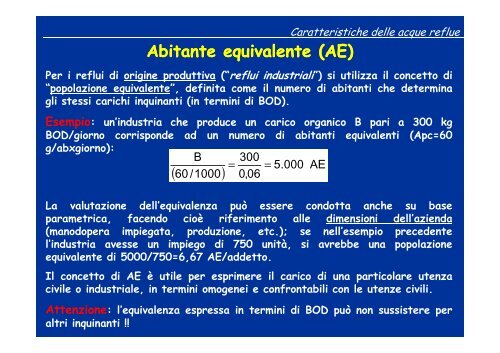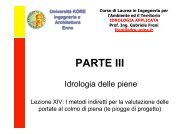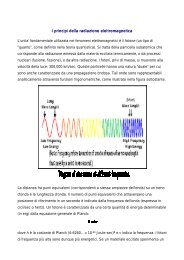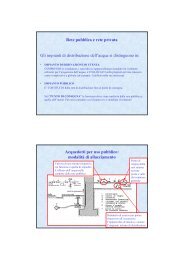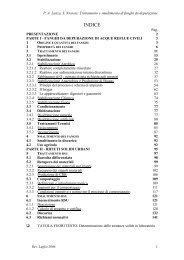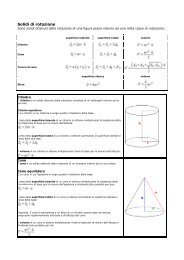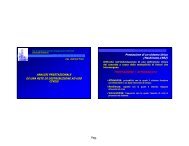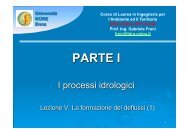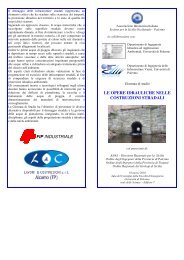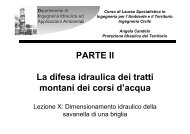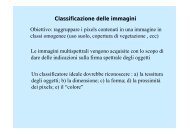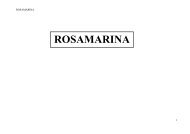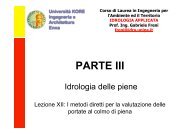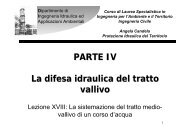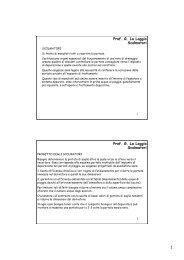TPA 01_Caratteristiche delle acque reflue - Dipartimento di ...
TPA 01_Caratteristiche delle acque reflue - Dipartimento di ...
TPA 01_Caratteristiche delle acque reflue - Dipartimento di ...
Create successful ePaper yourself
Turn your PDF publications into a flip-book with our unique Google optimized e-Paper software.
<strong>Caratteristiche</strong> <strong>delle</strong> <strong>acque</strong> <strong>reflue</strong><br />
Abitante equivalente (AE)<br />
Per i reflui <strong>di</strong> origine produttiva (“reflui industriali”) si utilizza il concetto <strong>di</strong><br />
“popolazione equivalente”, definita come il numero <strong>di</strong> abitanti che determina<br />
gli stessi carichi inquinanti (in termini <strong>di</strong> BOD).<br />
Esempio: un’industria che produce un carico organico B pari a 300 kg<br />
BOD/giorno<br />
g/abxgiorno):<br />
corrisponde ad un numero <strong>di</strong> abitanti equivalenti (Apc=60<br />
B<br />
=<br />
300<br />
( 60<br />
/ 1000 ) 0 , 06<br />
=<br />
5.<br />
000<br />
La valutazione dell’equivalenza può essere condotta anche su base<br />
parametrica, facendo cioè riferimento alle <strong>di</strong>mensioni dell’azienda<br />
(manodopera impiegata, produzione, etc.); se nell’esempio precedente<br />
l’industria avesse un impiego <strong>di</strong> 750 unità, si avrebbe una popolazione<br />
equivalente <strong>di</strong> 5000/750=6,67 AE/addetto.<br />
Il concetto <strong>di</strong> AE è utile per esprimere il carico <strong>di</strong> una particolare utenza<br />
civile o industriale, in termini omogenei e confrontabili con le utenze civili.<br />
Attenzione: l’equivalenza espressa in termini <strong>di</strong> BOD può non sussistere per<br />
altri inquinanti !!<br />
AE


